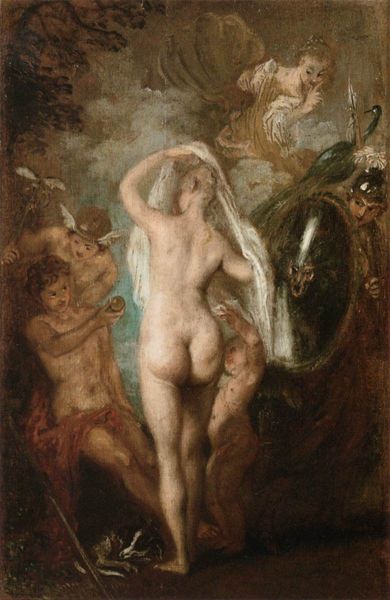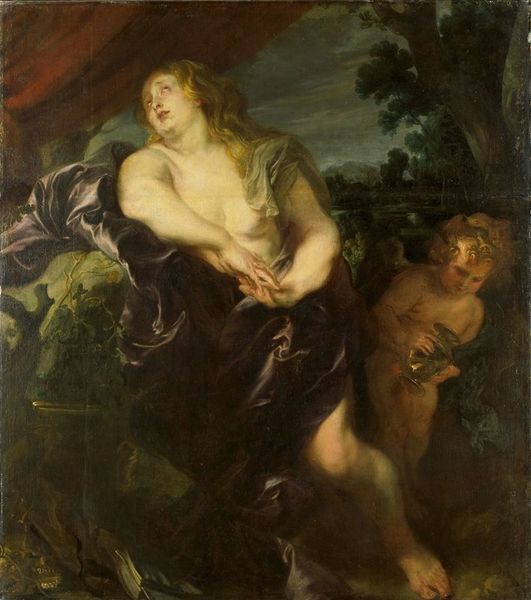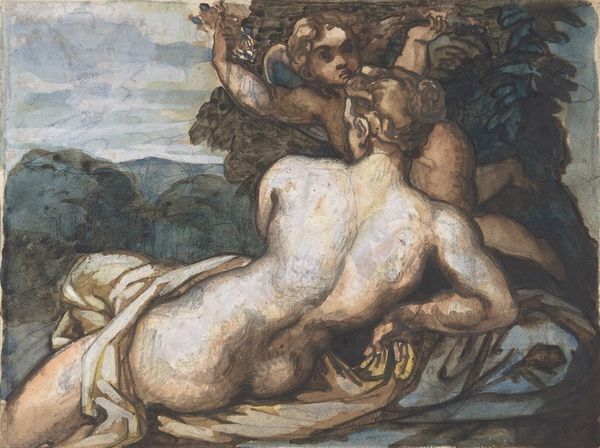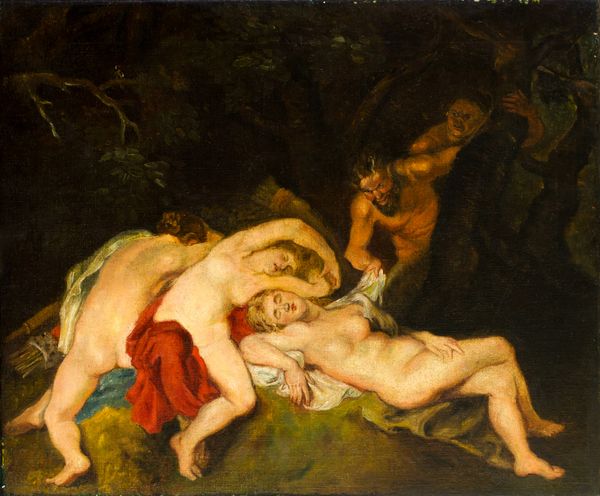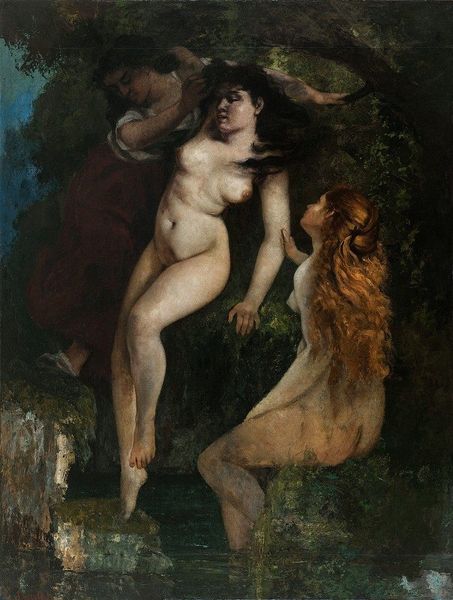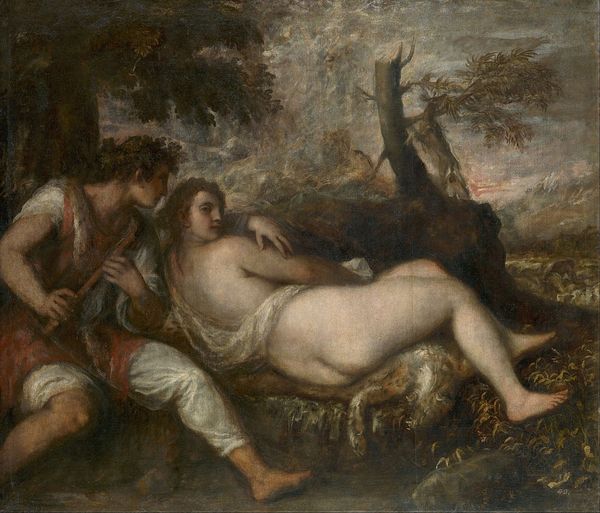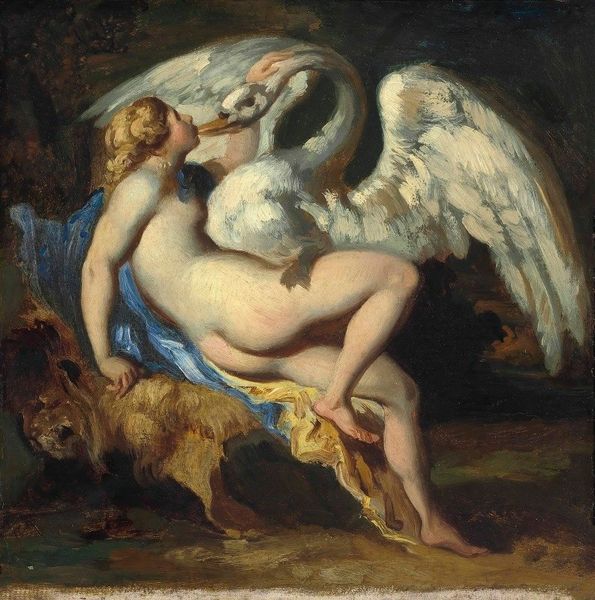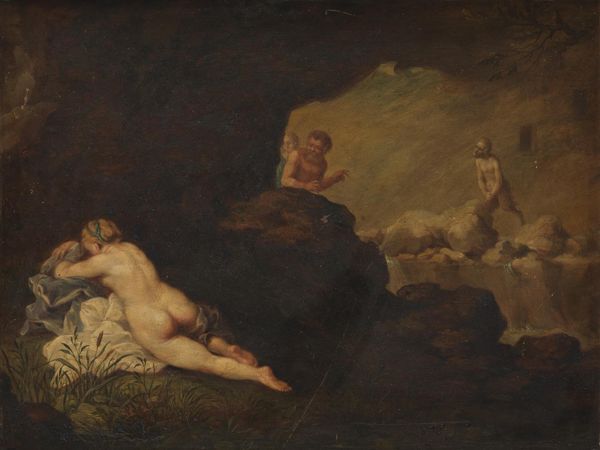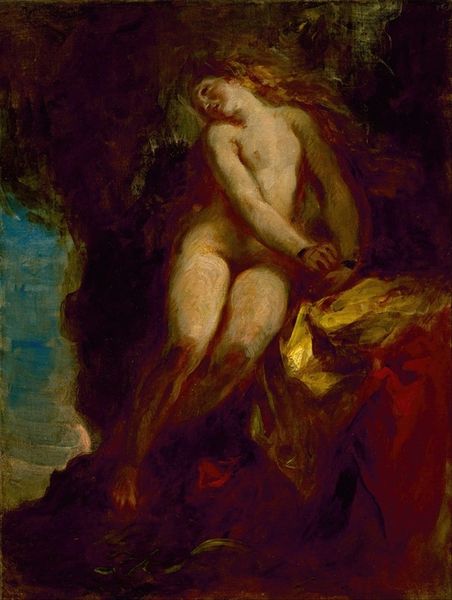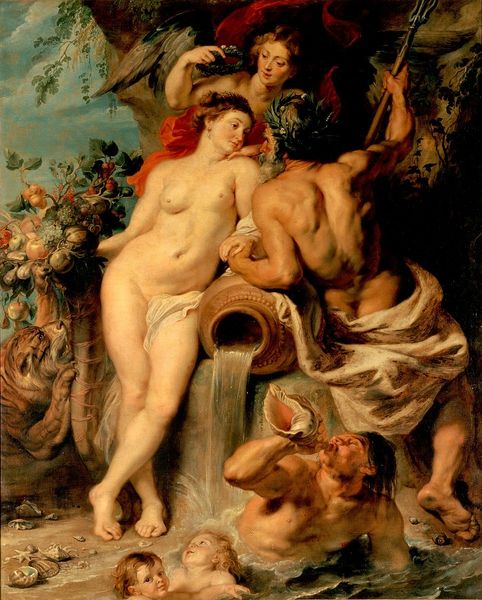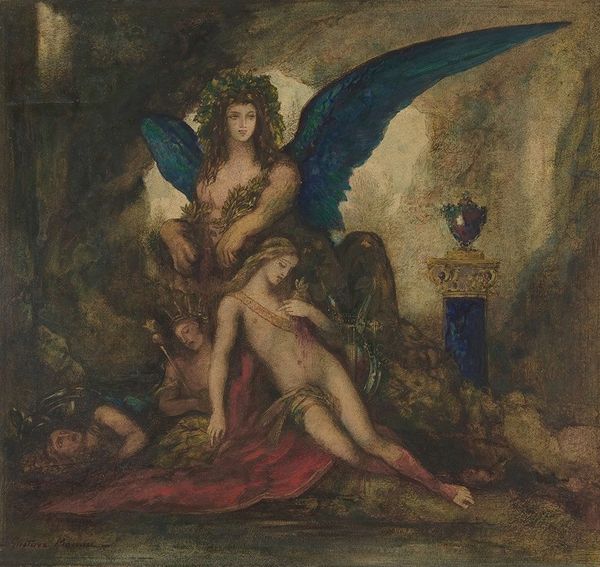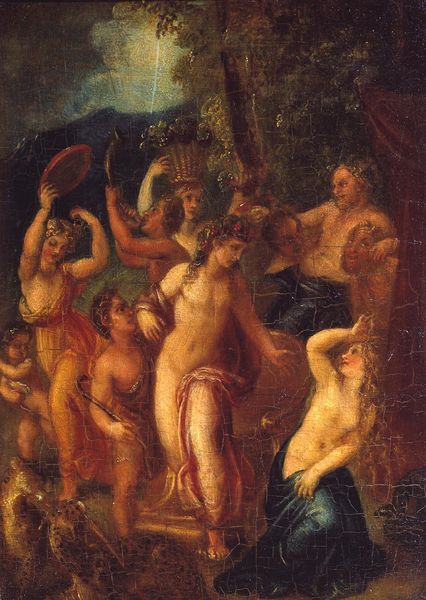
Dimensions: 23 x 30 cm
Copyright: Public domain
Editor: Here we have Paul Cézanne's "Satyrs and Nymphs," an oil painting from 1867. It has a very… chaotic energy, almost like a snapshot of a hidden drama. What do you see in this piece, especially considering the time it was made? Curator: It's tempting to view this through a modern lens, isn’t it? But Cézanne's “Satyrs and Nymphs” engages with a long, complex history of mythological subject matter, particularly its treatment within the academic art world. By the 1860s, mythological paintings had become stale. So, how do we interpret Cézanne's return to this trope? Does it conform, or subvert the established notions of idealized beauty and moral allegory common at the time? Editor: That's a great point! The figures are definitely not idealized, and there's an undeniable tension. I mean the nymphs almost seem afraid. Curator: Precisely. Cézanne is playing with expectations. He utilizes a traditionally "high" subject, and imbues it with a rawness that undermines academic conventions. Considering his later work, one might see this as a nascent critique of institutional authority in art, challenging viewers to confront the darker undercurrents within supposedly refined artistic traditions. Editor: So, it’s less about the literal subject of satyrs and nymphs, and more about making a statement about the art world itself? Curator: Yes, though it is not mutually exclusive. The subject serves as the vehicle to engage in such issues, as well as comment on traditional, gendered representations within mythological narratives. He utilizes mythology not as an escape, but to probe existing paradigms. This kind of deconstruction is fundamental to understanding Cézanne’s later impact. Editor: I never thought about it that way. This painting seems much more rebellious now! Thanks. Curator: It illustrates that paintings operate in dialog with their specific socio-historical moment, challenging both the values of the time and the artistic establishment. Examining context helps appreciate it beyond just visual elements.
Comments
No comments
Be the first to comment and join the conversation on the ultimate creative platform.
